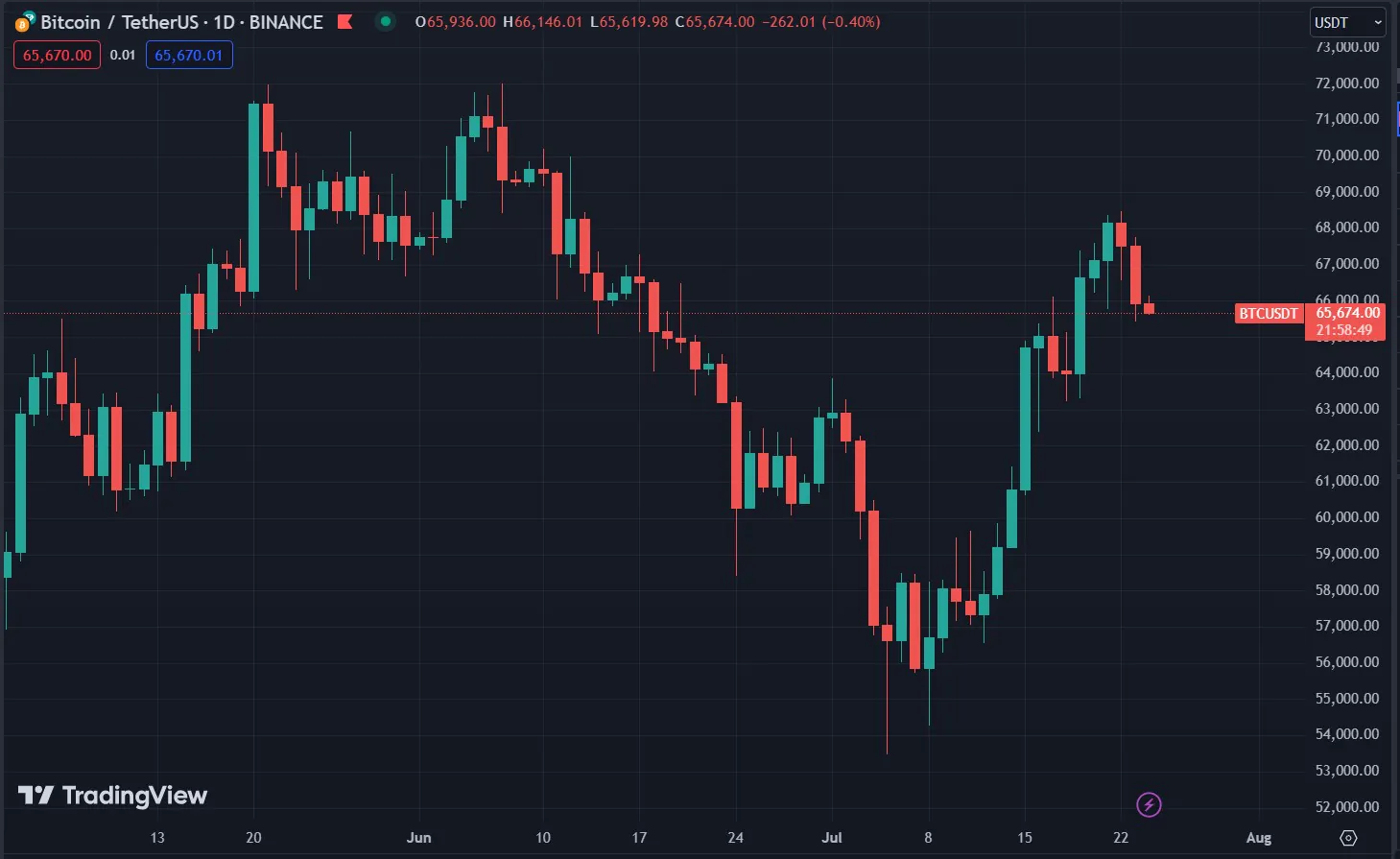Bitcoin miners’ revenue is approaching the 365-day SMA
In a recent post on X, analyst James Van Straten explored the current state of Bitcoin miners. There are several ways to assess miners’ situations, with hashrate being the most common. Hashrate measures the total computational power connected to the Bitcoin network.
However, the analyst focused on the total daily revenue of these network validators. Miners’ revenue comprises two main components: block subsidies and transaction fees.
Total Miner revenue is roughly $35M, and the 365(SMA) is roughly $40M.
This is another way to show the miner capitulation is almost over, once it reclaims the 365SMA and #Bitcoin can continue to trend higher. pic.twitter.com/slTiLoz670
— James Van Straten (@jvs_btc) July 22, 2024
The block subsidy refers to the BTC rewards miners receive as compensation for solving blocks on the network, while transaction fees are payments users attach to individual transactions. Historically, block subsidies have constituted a much larger portion of miners’ revenue compared to transaction fees.
The chart below illustrates how Bitcoin miners’ total revenue has evolved over the past few years. As shown, Bitcoin mining revenue began to rise with the price surge starting in October last year, reaching an all-time high (ATH) in April this year.
This increase occurred for two reasons. First, block subsidies, which are given in BTC, are typically fixed in both value and cycle, so the only variable affecting them is the USD price of the asset. Consequently, it makes sense that revenue would increase as the price rises.
Simultaneously, the network became busier due to heightened market traffic during the price surge. Transaction fees depend on blockchain conditions, given the limited space in blocks. This space naturally becomes more expensive as competition to transfer funds intensifies.
The spike to ATH revenue was particularly driven by the introduction of Runes, a new on-chain technology that allows users to mint fungible tokens. Transactions involving Runes are similar to any other transactions on the network, thus impacting the network’s economy as well.

The chart reveals that miners’ revenue plummeted sharply right after reaching this ATH, with values falling below the 365-day simple moving average (SMA).
The reason behind this is the fourth Halving event. While block rewards remain constant most of the time, Halving events are the exception. Occurring every four years, these events permanently cut block rewards in half, significantly altering miners’ revenue.
Since this reduction, Bitcoin mining revenue has stayed below the 365-day SMA, exerting pressure on many miners and forcing some to capitulate.
However, with the latest recovery, miners’ revenue has risen to $35 million, not far from the annual average of $40 million. Van Straten noted, “This is another way to indicate that miners’ capitulation might be nearing its end.”
According to the analyst, if this metric can reclaim the 365-day SMA, Bitcoin might continue to trend higher.






